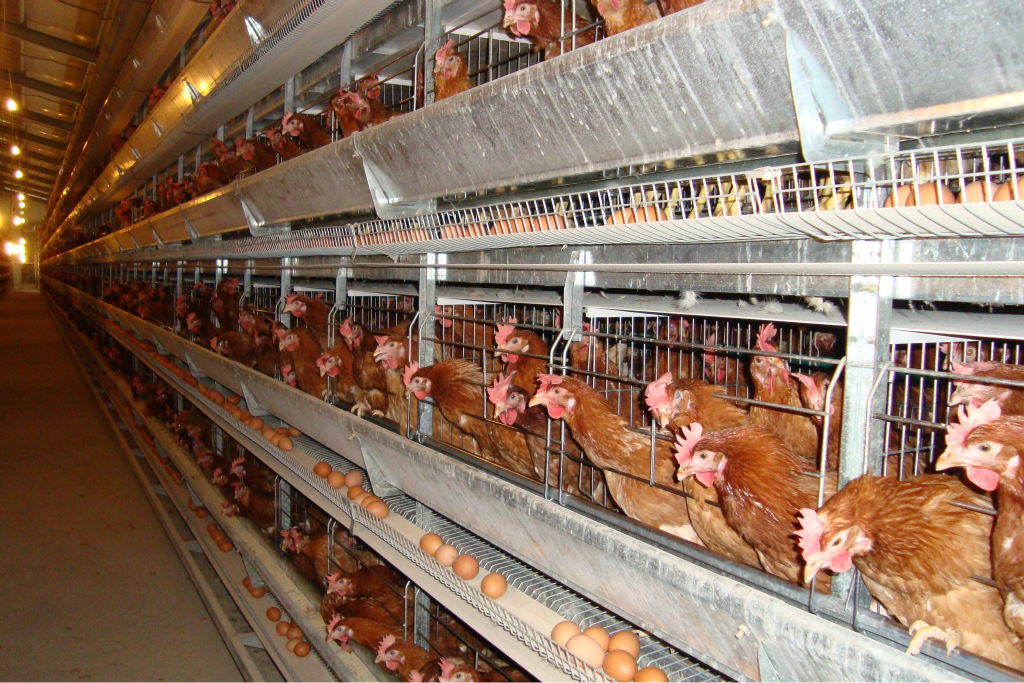 Early winter is the spring rearing laying hens just entered the peak season of egg production, but also green feed and vitamin-rich feed lack of season, the key to grasp some of the following points:
Early winter is the spring rearing laying hens just entered the peak season of egg production, but also green feed and vitamin-rich feed lack of season, the key to grasp some of the following points:
Change the pre-egg feed at the right time. When laying hens reach 20 weeks of age, they should be fed pre-egg feed. The calcium content of the material should be 1%~1.2%, and the crude protein content should be l6.5%. The whole process of changing feed to half a month’s time to gradually complete, in order to prevent the change of feed too suddenly caused by dilution and other diseases of laying hens. After the egg production rate reaches 3%, the calcium content of the feed should be 3.5%, and the crude protein should be 18.5%~19%.
Properly control the weight of laying hens. At the same time of changing materials and calcium supplement, we should grasp the uniformity control of flock development, separate large and small hens into groups, and regularly adjust the flock. Do not suddenly increase or suddenly reduce the material.
Timely adjustment of the temperature of the chicken house. The optimal temperature for laying hens is 18 degrees Celsius to 23 degrees Celsius. When the temperature of the chicken house is too low and do not increase the feed in a timely manner, the laying hens will delay the start of production due to lack of energy, even if the start of production and will soon stop production.
Regulate humidity and proper ventilation. Chicken coop humidity can not be too high, otherwise the chicken will appear feathers dirty and messy, loss of appetite, weak and sick, thus delaying the start of production. If the ventilation is poor, the harmful gases in the air increased, the oxygen content is reduced, the same will make the reserve hens stunted and delay the start of production. Therefore, when the humidity of the chicken house is too high, we should pad more dry material and ventilate appropriately to reduce the humidity.
Control light timely regulation. Spring hatched reserve hens generally l5 weeks old into the sexual maturity stage, this period of natural light time is gradually shortened. Light time is short, the time to reach sexual maturity is long, so 15 weeks of age should begin to supplement the light to meet the needs of the chicken sexual maturity. Light time should be maintained at l5 weeks of age, but the light intensity can not be too strong to prevent chickens pecking feathers, pecking toes, pecking back and other vices. The appropriate light time for laying hens is generally 13~17 hours per day.
Supply enough water to increase nutrition. Drinking water is very important for laying hens, generally – only hens need water 100~200 grams per day. Therefore, laying hens can not be short of water, it is best to use the flow of water tank water supply, can also be supplied 2~3 times a week of light saline, in order to improve the body quality of laying hens, to increase the amount of food intake. In addition, some carrots or green feed can be fed every day to improve the quality of eggs.
Post time: Oct-13-2023





